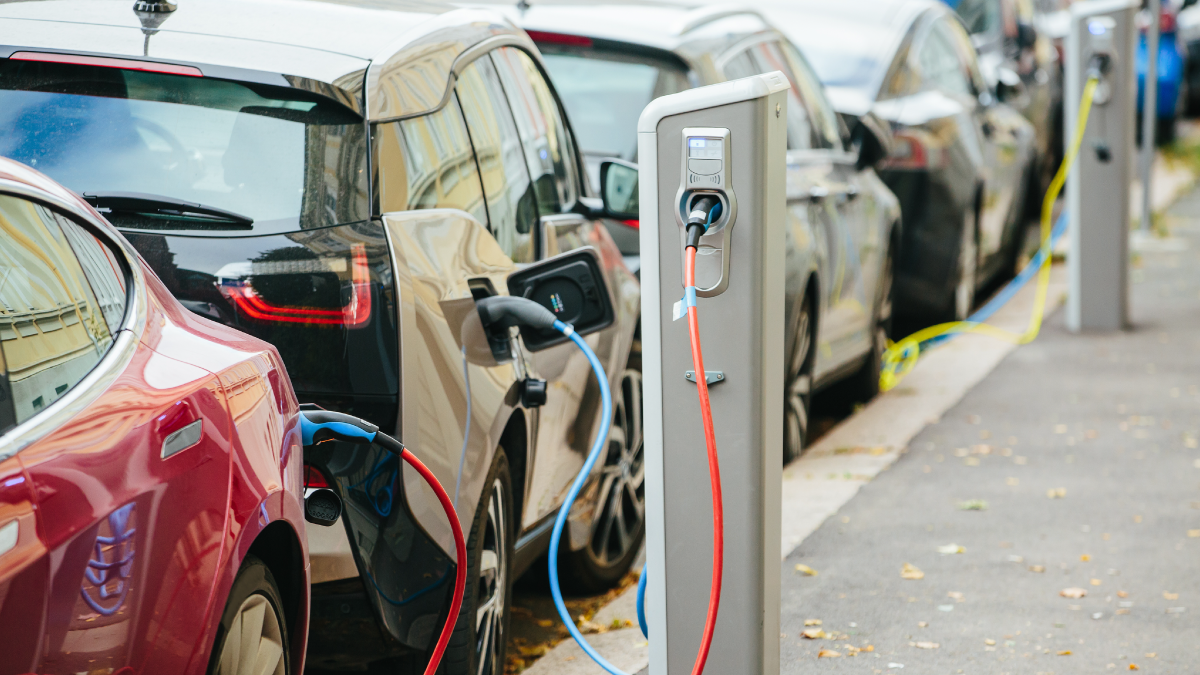Electric vehicles solve a lot of problems. But they also create a few of their own.
One is power consumption. With the popularity of EVs on the rise, the prospect of recharging millions at a time risks putting huge pressure on electricity grids, especially during peak charging times.
That’s where vehicle-to-grid (V2G) technologies come in. It’s a concept that turns electric vehicles from consumers of electricity to suppliers as well, by enabling them to give power back to the grid, or even to a smart building. And as they do this, the vehicles can also generate new revenue.
The E-Flex Project — a joint initiative between Cisco’s Country Digital Acceleration (CDA) program, the Imperial College of London, and other partners — transforms electric vehicles into net-zero contributors.
It all comes down to their batteries, which are great at powering vehicles when driving around town but can have an equally important impact when parked.
“When you harness the battery capacity of electric vehicles at scale and give that power back to the grid,” said Peter Shearman, Head of Innovation, UK and Ireland, at Cisco, “you begin to reach a critical mass in which you impact carbon emissions, cost/benefit economics, design, compliance with government net zero regulations, and much more.”
The E-flex Project has been proving the potential of V2G with fleets of vehicles owned by public and private-sector organizations, starting outside London and expanding to include 20 locations around the UK, all outfitted with two-way charging stations.
The project is all about scale.
“We’re not talking one, two, or three vehicles,” said Roy Donaldson, Business Solutions Architect, Global Transformation accounts for Cisco UK and Ireland. “We asked, what happens when a fleet owner parks 100 electric vehicles? Suddenly, I go from having a single van with an 80-kilowatt battery, to one that’s multiplied by 100. That’s 8,000 kilowatts potentially sitting there parked. We wanted to see how that fleet concept changes the dynamics.”
The timing of many idle vehicle fleets dovetails perfectly with what Donaldson describes as “the non-linear nature of energy demand.”
“Energy demand has a ‘Duck curve’ demand spike,” Donaldson continued. “It comes along relatively straight and then spikes upward from 4 pm onwards to 10 pm. You don’t want to be adding more pressure to the grid to cope with that duck curve.”
A power plant on (idle) wheels
While the E-Flex project has focused on fleets of vehicles, Guy Diedrich, who as SVP and global innovation officer is responsible for Cisco’s Country Digital Acceleration, sees applications going beyond commercial and public-sector fleets. For instance, to eventually creating two-way energy distribution at home, or at places like airports, where cars might sit idle for days or weeks at a time. By contributing to the grid, vehicle owners could even collect revenue or reduce their overall energy expenses. And taking Donaldson’s calculation a bit further, 10,000 idle vehicles could represent 800,000 kilowatts of storage capacity.
“What if I get in my fully charged car in the morning, drive to work, run my errands, and come back with half the charge left in car,” Diedrich explained. “I plug that car in at home and at that moment, my vehicle becomes a net contributor, back to the grid with the half charge that is embedded in that car. Because there’s a surge in demand as people are coming home, cooking dinner, turning on televisions, air conditioners, and all the other things that we do at home. Then at a fixed time after midnight, that vehicle starts drawing a charge again.”
To accomplish this kind of two-way energy distribution in the E-flex project, Cisco contributed technology and expertise in key areas, such as connectivity for two-way charging stations, cybersecurity, and cloud-based app performance. Specific solutions include IR807 routers and Cisco’s Umbrella cloud-security solution, all tied together with an intuitive operations dashboard. Meraki cameras added to physical security at charging stations.
“The potential is huge in this space,” added Sielen Namdar, Industry Executive and Cisco’s Global Sustainability Lead for Industries. “Particularly for industries such as utilities, transportation, retail, government, and energy suppliers. Integrating electrification into their systems opens up a whole new dimension of business models and opportunities to innovate.”
Like any innovative project, there has been trial and error along the way, but over three years it has begun to pay great dividends.
“Across 20 different trial sites stretching from Scotland way down to the South coast, we’ve found a lot of value in aggregating this power,” said Shearman. “It has allowed us to do things like participate in frequency regulation markets where you're helping the grid balance its loads. And we found we could get good carbon impact through the offset value of not drawing down power. It’s actually generating carbon credits, which in the UK are a tradable commodity.”
Picking up the slack for renewable energy
Smart buildings or business parks, with their own microgrids driven by renewable sources like wind or solar, could be another important application.
“Vehicles can act as local energy storage alongside renewables,” said Shearman. “It makes the whole concept work better by helping with the fluctuations in renewable-energy generation and moves a smart building closer to net zero.”
Across the planet, climate change is rapidly approaching a critical tipping point. And electric vehicles will be an important piece of the puzzle in solving it, especially as more governments impose restrictions. The UK, for example, expects to eliminate all combustion-engine vehicles by 2035. That’s why it’s so important to make EV technologies as accessible, low-cost, and high-impact as possible.
“I recently read an article in California where they were asking people to slow down on the charging of their cars,” said Diedrich, “because they were putting too much stress on the electrical grid. That’s why E-Flex is one of my favorite CDA projects, because it enables electric vehicles to be truly sustainable.”
Donaldson is excited at the progress of the E-Flex project so far, and he looks forward to a great future.
“This is clearly an innovation project,” he concluded. “If you go back a few years to when we started, it was all a big question mark. We were trying something very different in the marketplace. And we learned so much. We now know how to build a two-way electric charging network. And we can really help accelerate and scale this kind of infrastructure and innovation across the globe.”
###




